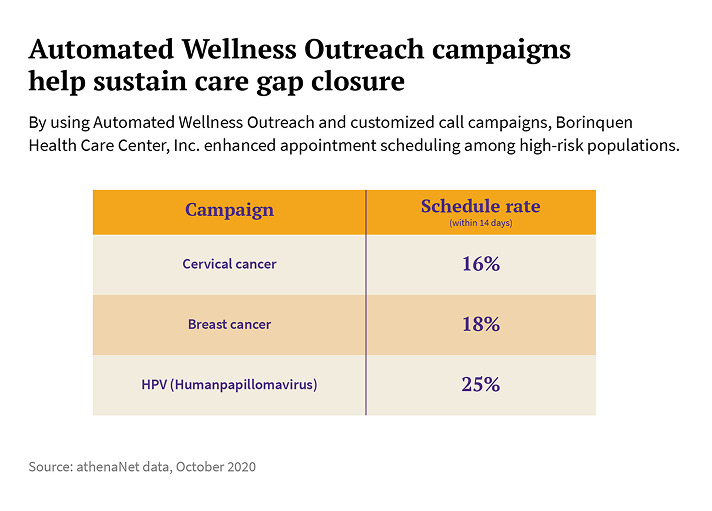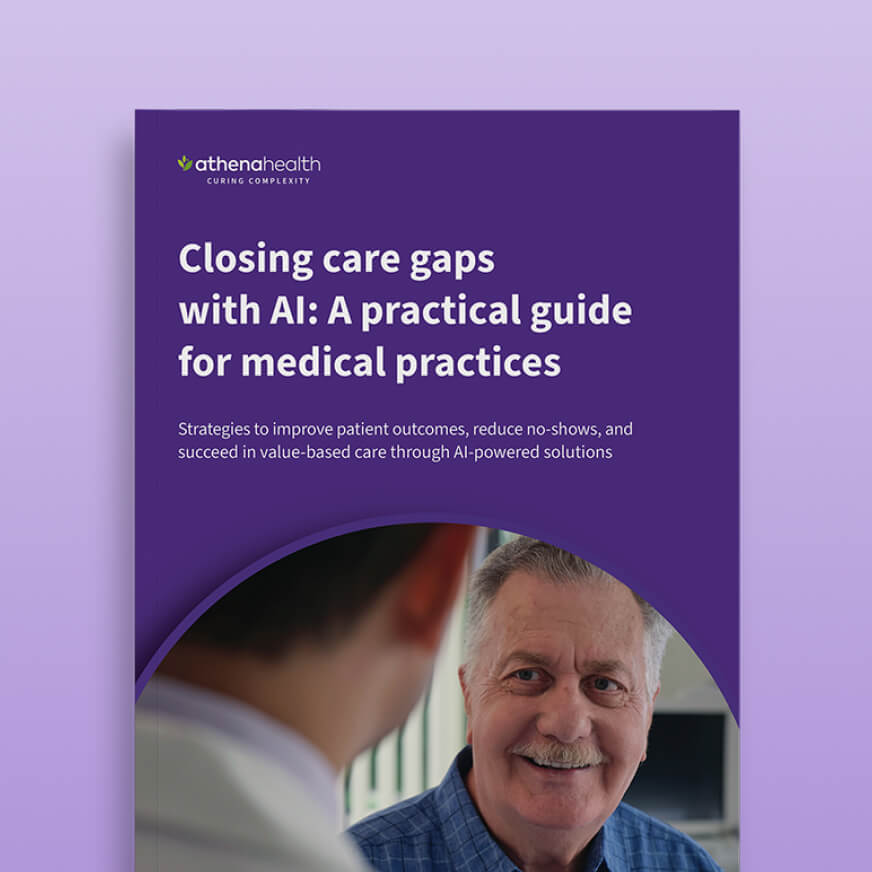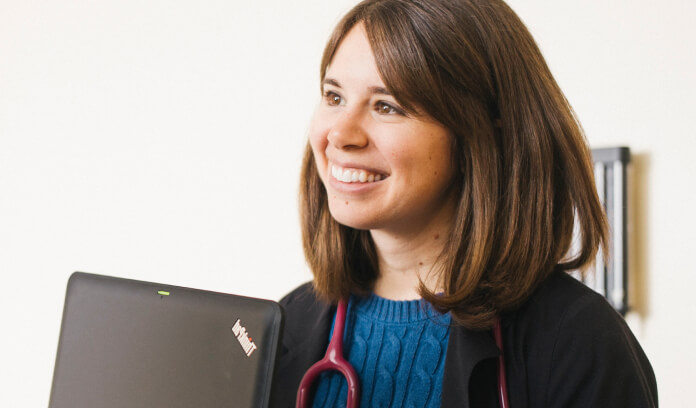Borinquen Health Care Center, Inc., in Miami has been incrementally improving its approach to managing patient data for years. While COVID-19 has pushed and pulled the federally qualified health center in different directions, Borinquen has continued to refine its approach to collecting and analyzing clinical data in order to address care gaps during the pandemic — always trying both to connect to more sources of data and identify opportunities to make use of it.
Harnessing the power to address gaps in care
With 12 locations and 47,000 patients spread across Miami-Dade County, Borinquen offers primary care, dental, and behavioral health services, as well as social and education services. The health center adopted athenaOne as its EHR in 2014, which helped connect the dots between various care settings both inside Borinquen’s network and out. An integration with Dentrix allows clinicians access to Borinquen dental records while also enabling the capture of data required for FQHCs’ Uniform Data System (UDS) reporting. And since procedure codes for orders and labs in the clinical setting are mapped to the billing tab for revenue teams, a large burden of work is removed from staff across the organization – at the same time automating quality measurement reporting. The functionality gives Borinquen a more complete picture of their patients’ health.
With more complete information, clinicians are better equipped to spot what’s missing – that is, gaps in care. Addressing care gaps is especially important given the fact that many of the FQHC’s patients are low-income and high-risk. Social determinants of health like poor working and living conditions often impact the amount of time and resources patients can dedicate to their own health. Clinicians have been assisted, in part, by embedded functionality that surfaces patients’ formularies for pharmacy benefits, and for some payers even determines expected out-of-pocket expenses. And athenahealth's integrations with the 340B Drug Pricing Program — either through integration engines like HL7 interfaces or automated report delivery — give the health center even more crucial information that has helped mitigate the price of medications over the years.
But even still, Chief Quality Officer Diego I. Shmuels, MD, was deeply concerned about what the economic impact of the pandemic would be on the health center’s patients. Borinquen’s large panel of diabetes patients, for instance, can easily see their disease spin out of control when they have problems paying for medication after the loss of a job or reduced income, he said.
Transparency enables focusing on the right patients at the right time
The Borinquen team took an all-hands-on-deck approach when it came to preventing the center’s low-risk patients becoming high-risk due to delayed or cancelled care. Pivotal to it all was a strategic approach to focusing on their most vulnerable populations first. Thankfully, the FQHC already had valuable tools in place to provide the right insights, including athenahealth Population Health. Its capabilities include curating data regarding utilization trends across multiple care settings; identifying care gaps; and enabling care team coordination (especially important for FQHCs like Borinquen).
With the information they needed in hand, Shmuels and his team were able to engage patients using a combination of automated wellness outreach and customized call campaigns to address some language barriers. The results were impactful — out of those who received a text message or email for services requiring follow-up, 25 percent of those identified as in-need of HPV screenings scheduled within 14 days; 18 percent of those needing a breast cancer screening who were contacted scheduled within 14 days; likewise, 16 percent for those in need of a cervical cancer screening.

As Borinquen ramped up vaccination efforts at its clinics, having an EHR that integrated with Florida SHOTS (State Health Online Tracking System) helped significantly. The free, statewide, centralized online immunization registry helps schools, parents, and healthcare providers keep track of immunization records. The result was a narrower focus to determine who was in need, and which patients were at reduced risk of contracting COVID-19 due to being vaccinated.
Increasing telehealth volume to manage high-risk patients
Other critical pivots during the pandemic were enabled by the flexibility of Borinquen’s EHR platform. The FQHC was already taking advantage of the athenahealth Marketplace, which offers what Shmuels calls “seamless” third-party integrations to optimize clinical and financial performance. Those can be developed thanks to athenahealth’s open APIs.
One such integration is Qure4U. Diverse capabilities include patient self-scheduling, and remote patient monitoring “with device integration and everything in between,” Shmuels says. But when it came time to flip a switch practically overnight to provide telehealth as lockdowns ensued, Qure4U was essential. The Borinquen team and many patients were already familiar with the interface. Having telehealth ready to be ramped up meant the organization was able to serve patients quickly – especially high-risk populations like Borinquen’s large HIV-positive panel. Transitioning to virtual care meant Borinquen could target closing those care gaps while also preventing other low-risk patients from becoming high-risk patients.
“Technology was pushed to the level of having to accommodate people as quickly as possible,” Shmuels said.
An open ecosystem increases access to data — and in turn, care
Another essential Marketplace partner for Borinquen is Avhana, which provides what Shmuels describes as “care gap scorecards.” Borinquen has greater visibility into patient discharges from hospitals thanks to an emergency notification system.
These capabilities complement what is already a robust portrait of Borinquen’s patient panel due to athenahealth’s participation in the CommonWell Care Alliance. Information surfaced from care settings outside of Borinquen is automatically tagged to the correct patient within the chart for clinician review.
All of these tools together have improved Borinquen’s evaluations of why patients are discharged, and medication reconciliation, Shmuels said.
“As the informational data is coming through, it’s been transferred consistently, and also providing an interface of what prescription medications are coming in,” Shmuels said. “It allows us to understand why the patient was discharged; was it a preventable visit or not; and determine the level of acuity for our patients. It opens up the ability for providers to see if a patient has an issue with medications given; they can follow up and we can more easily see a continuity-of-care record.”
Shmuels added that ongoing efforts to better manage clinical data only keep contributing to his team’s ability to continue providing high-touch, high-quality care.
“As more data is coming in and more data is transferred, it helps us do better,” he said.
More closing care gaps resources
Continue exploring
Joseph Cantlupe contributed to the reporting of this article.
Borinquen Health Care Center, Inc. participates in athenahealth’s Client Advocacy Program. To learn more about the program, please visit athenahealth.com/client-advocate-hub. Borinquen Health Care Center, Inc. was not compensated for participating in this content.











